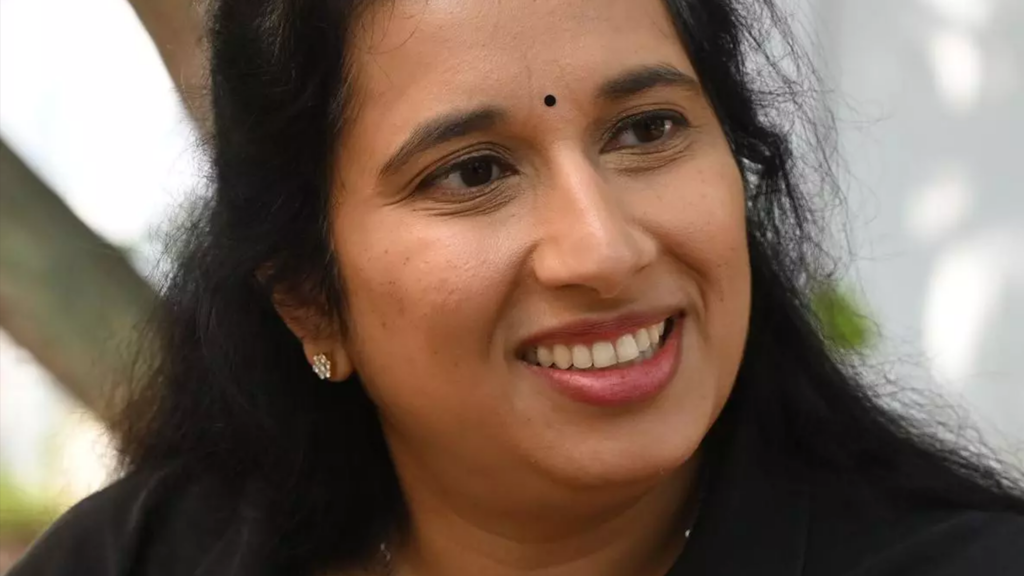Dr Swati Mohan, the Indian-born NASA engineer, whose historic words, “touchdown confirmed”, announced to the world the successful landing of the Perseverance rover on the surface of Mars on February 18, 2021
The NASA-ISRO Synthetic Aperture Radar (NISAR) mission, the first of its kind in terms of the depth of collaboration between the space agencies of the US and India, will open the door for future missions For future collaborations, “the universe is the limit,” says Dr Swati Mohan, the Indian-born NASA engineer, whose historic words, “touchdown confirmed”, announced to the world the successful landing of the Perseverance rover on the surface of Mars on February 18, 2021.
Dr Mohan, who is on a visit to Chennai, works at NASA’s Jet Propulsion Laboratory, which is ISRO’s partner in the NISAR project.
The NISAR is a satellite and it is expected to be launched in December 2024.
The synthetic aperture radar will “measure Earth’s changing ecosystems, dynamic surfaces, and ice masses providing information about biomass, natural hazards, sea level rise, and groundwater, and will support a host of other applications,” per information provided by the NASA.
The satellite will observe Earth’s land and ice-covered surfaces globally with 12-day regularity on ascending and descending passes, sampling Earth on average every 6 days for a baseline 3-year mission.
In a conversation with businessline, Dr Mohan said that the NISAR project is a good example of an “equal collaboration” between NASA and ISRO.
Observing that both NASA and ISRO contributed equally to the development of the satellite, Dr Mohan said, “It is a very balanced partnership which helps us learn from each other and learn which aspects each agency has strengths in.”
“This will teach us what our strengths are and will pave the way for future collaborations,” she said.
“It is our first attempt to do a broad collaboration and the success of that will really open the door for future missions,” she added.
Asked about areas in which both agencies could collaborate, Dr Mohan pointed out that she is not the spokesperson for NASA and hence not in a position to speak in specific terms. But she observed that broadly, there are synergies in what ISRO and NASA are doing, like landing on the moon and future missions to Mars and Venus.
Asked whether a space agency should do diversified missions, some scientific and some for practical use like telecommunications and remote sensing, Dr Mohan said that diversified missions impart robustness to the space agency.
Bringing Mars Samples Back
Dr Mohan, who was the ‘Guidance, Navigation and controls operations Lead’ for NASA’s Perseverance Mars rover mission, is currently working on the ‘Mars sample return programme’.
This programme is for picking up the rock and soil samples collected by the Perseverance rover and bringing it back to the Earth, in order to detect any signs of past life on Mars.
The first leg of Mars sample return is currently underway. Perseverance has successfully collected about 23 rock samples. “It still has the capability to collect a few more,” Dr Mohan said.
Also read: PM Modi introduces ‘astronaut designates’ for Gaganyaan human spaceflight mission
The rover has laid on the ground, on Mars, about half the samples it has collected and has the other set with it. “This gives us the option that if perseverance doesn’t survive until the next mission comes, we have samples that are already on the ground that the next mission can pick up. If perseverance is still alive, we have the ability to get the samples directly from Perseverance,” she said.
NASA is now working on how to get those samples back.
“It requires another lander to do that; the lander has to have a rocket on it to launch the samples off of the surface and then there’s another spacecraft to collect the samples in space and bring it back. I’m working on the rocket part of it,” Dr Mohan said.

